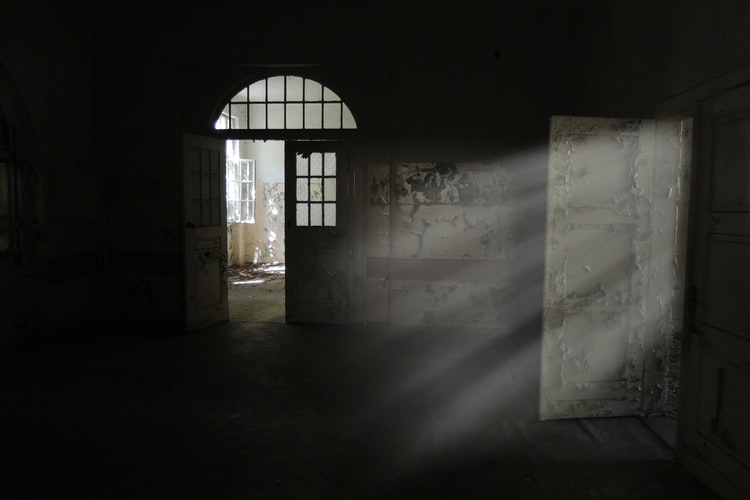How To Spot The 4 Major Types Of Damp?

You are investing time and money to create your dream home or any civil construction. Unfortunately, one single sign of dampness is ruining the whole appearance of the construction structure.
Not only the look but also the forms are getting much weaker due to dampness. In addition, the damp wall of the house is turning to be more fragile and easily breakable.
You may be thinking the repair cost of the damp wall is very high. But when you find the dampness at the primary level, Your fixing cost is getting much less. However, how do we find the primary signs of dampness in any civil construction? Here is the answer for you.
4 Major Types Of Damp And How To Find Them
Damp is like small wood-eating insects. When you can find it from the primary stage of wood decay, then it’s repairable; however, it can be repaired after extensive area decay. Therefore, it is almost impossible to fix.
Let’s know the primary signs of dampness and take precautions to save your constructions.
Here are four significant types of damping. In this section, we will learn about the significant damp spots, the causes behind the dampness, and how to get the remedy to cure dampness from the properties.
1. Penetrating Damp
Penetrating dampness is simply moisture making its way into the home from the outside through a wall or, more often than not, a leaky roof. The main signs are damp patches, usually towards the top of the walls.
In more severe cases, you’ll also notice damage to wallpaper (it might be peeling) and flaking/bubbling plaster moving outside. Finally, there might be damage to walls or pebbledash.
If the damp patches are in the attic, loose or damaged flashing on the roof is probably responsible. Missing roof tiles can also lead to penetrating dampness. It’s always worth getting your roof checked by professionals like D&D Roofing and Sheet Metal, who will be able to stop leaks before they get out of hand.
2. Condensation
Condensation occurs when there is too much moisture in the air. This might arise from drying clothes inside, showering, and then letting the steam dissipate around the house or even an excess of humidity.
A musty smell is the most common sign, accompanied by telltale steaming across the windows and other cold surfaces like mirrors.
Condensation isn’t as dangerous as penetrating damp, but it will lead to the growth of black mold if left untreated. It’s usually quite simple to find out what’s causing the condensation, and then various cleaners are available to tackle mold. Bathrooms are most commonly afflicted, and black mold tends to build up on windowsills.
3. Rising Damp
The bane of many a homeowner’s life, rising damp, has a fearsome reputation for its destructive bent. It’s hard to miss. Unlike penetrating damp, the signs will appear at the bottom of the walls and in the lower parts of the house.
Rising dampness manifests itself as a yellow/brown stain that rises from the skirting board and spreads insidiously up the wall.
Plaster and skirting boards will rot, the wallpaper will peel away, and in severe cases, even the floor coverings might start to lift.
Rising dampness is destructive and should never be left to spread unchecked. An entire damp course (undertaken as soon as possible) is your best course of action when you notice any of these signs.
4. External Damp
Damp is most serious on internal walls, but that doesn’t mean that you should ignore signs on the outside of the property.
Wet patches on walls are dead giveaways of a problem, along with areas where vegetation has begun to sprout. Pipes and gutters are often the culprits, but leaving external dampness unchecked will eventually cause interior issues.
Penetrating dampness begins outside, so it’s essential to check your property regularly. Roofs are a significant area of concern, too, but you can take some simple precautions to stop dampness from developing.
Clear gutters regularly and scrub away any excess moss. Small patches of moss are natural and harmless, but a proliferation can harbor moisture.
The Leading Cause Behind Dampness In Your House
Unfortunately, every homeowner and landlord has experienced dampness in some of their lives. It is indeed a serious issue, and one must never overlook it.
Dampness can lead to several chronic health issues like asthma. It can also damage the overall exterior of a building. But don’t think there is any way of getting rid of it. The good news is that in the majority of the cases, the issues can be fixed.
Condensation or similar damps mainly occur due to contact between cold surfaces and condenses. You may find damps in spaces like wall spaces, floor cavities, and roofs. This dampness can cause structural damage as well as mold growth.
You can add almost four pints into the air in your daily activities, such as washing, cooking, etc., where you need water.
Another significant issue is inadequate heating. Warm air holds a large portion of water. This further condenses on a more excellent surface. This way, it creates dampness.
Inadequate ventilation can also cause dampness in your home. Usually, proper ventilation planning helps the moist air to escape. If your home has poor ventilation, the moisture-filled air might get trapped in rooms.
Other than that, rising damps mainly come from groundwater rising or mostly from moisture penetration. You can typically find these types of damps in the older buildings.
Lastly, specific building faults can lead to significant dampness issues. You can also blame the elevated ground levels for the dampness.
Conclusion:
When you find the primary signs of dampness, the fixing cost will be much less than your expectations. But dampness is a fast-spreading problem.
After the minor signs slowly, it is going to eat your whole construction wall. So it is better to identify the problem and start to repair it on time.
Read Also:
















Leave A Reply